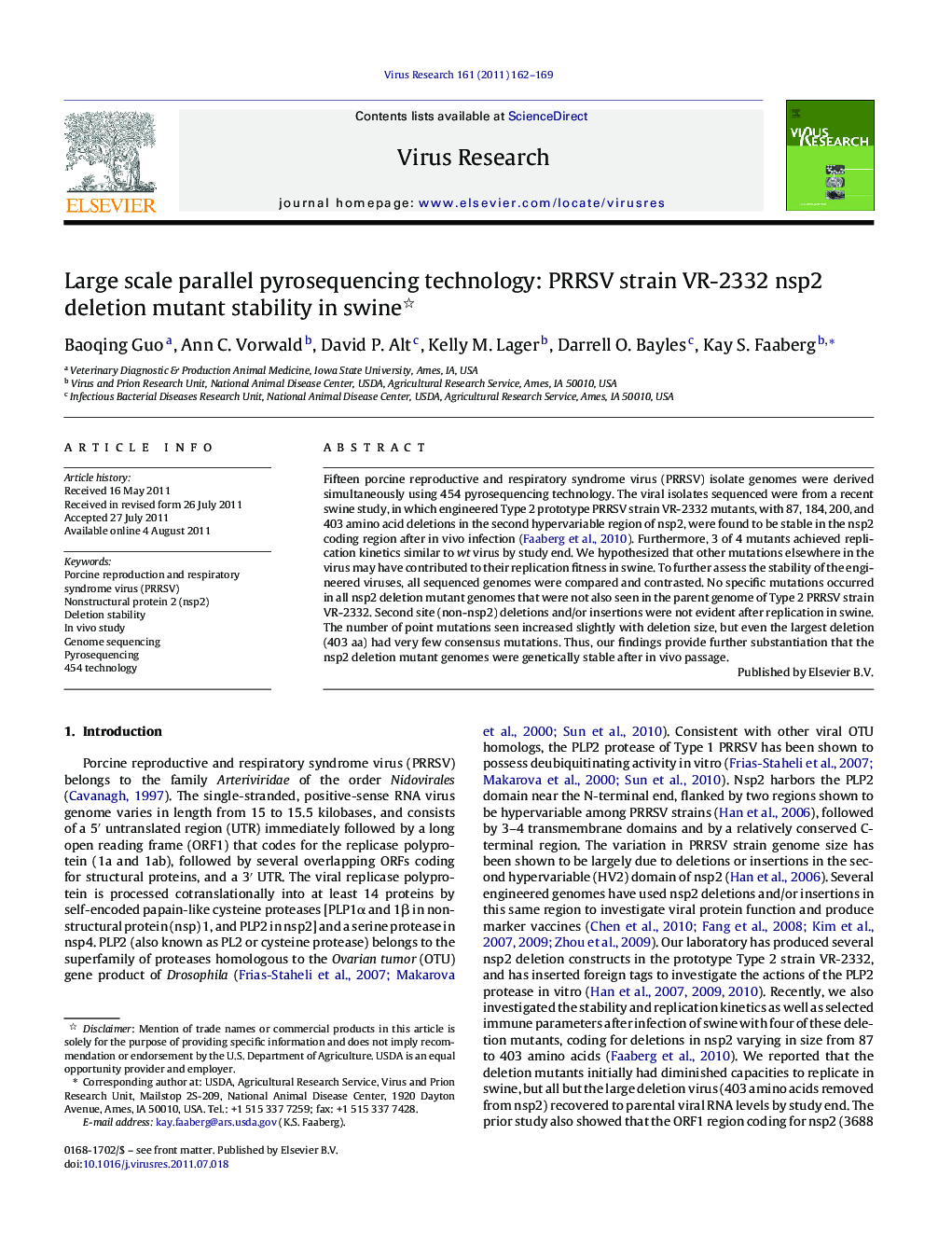| Article ID | Journal | Published Year | Pages | File Type |
|---|---|---|---|---|
| 3428847 | Virus Research | 2011 | 8 Pages |
Fifteen porcine reproductive and respiratory syndrome virus (PRRSV) isolate genomes were derived simultaneously using 454 pyrosequencing technology. The viral isolates sequenced were from a recent swine study, in which engineered Type 2 prototype PRRSV strain VR-2332 mutants, with 87, 184, 200, and 403 amino acid deletions in the second hypervariable region of nsp2, were found to be stable in the nsp2 coding region after in vivo infection (Faaberg et al., 2010). Furthermore, 3 of 4 mutants achieved replication kinetics similar to wt virus by study end. We hypothesized that other mutations elsewhere in the virus may have contributed to their replication fitness in swine. To further assess the stability of the engineered viruses, all sequenced genomes were compared and contrasted. No specific mutations occurred in all nsp2 deletion mutant genomes that were not also seen in the parent genome of Type 2 PRRSV strain VR-2332. Second site (non-nsp2) deletions and/or insertions were not evident after replication in swine. The number of point mutations seen increased slightly with deletion size, but even the largest deletion (403 aa) had very few consensus mutations. Thus, our findings provide further substantiation that the nsp2 deletion mutant genomes were genetically stable after in vivo passage.
► A protocol was designed for 454 pyrosequencing of multiple PRRSV genomes. ► Viruses with variable deletions in nonstructural protein 2 were sequenced after swine passage. ► Even the largest nsp2 deletion (403 aa) had few mutations. ► Engineered PRRSV mutants were genetically stable.
